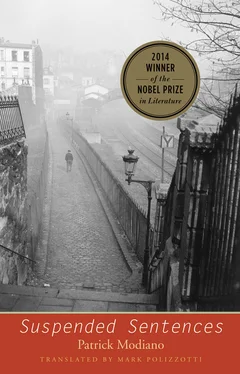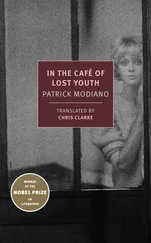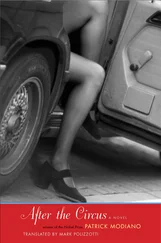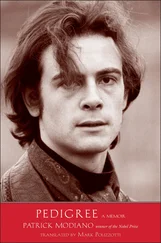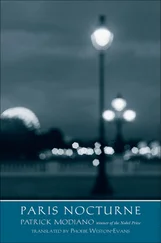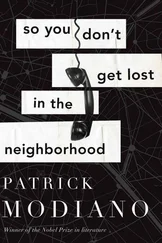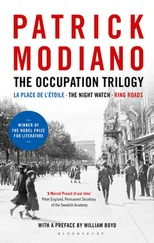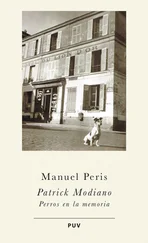The tracks ran along the viaduct on Avenue Daumesnil, whose arches were populated with cafés, warehouses, and businesses. Why do I so often walk along this viaduct in my dreams? This is what one discovered under its arches, in the shade of the plane trees along the avenue:
L’Armanite Laboratory
Garage des Voûtes
Peyremorte
Corrado Casadei
Notre-Dame-de-Lourdes Dispensary
Dell’Aversano
La Régence, furniture maker
Les Marbres Français
Café Bosc
Alligator, Ghesquière and Co.
Sava Autos
Daumesnil Wireworks
Café Labatie
La Radieuse heating
Testas, nonferrous metals
Café-Tabac Valadier
One summer evening, at Café Bosc, just before my departure for Vienna, the tables were set out on the sidewalk. I couldn’t take my eyes off the lights of the Gare de Lyon, nearby …
The train stopped at Reuilly, then at Bel-Air. It exited Paris via the Porte Montempoivre. It passed by the Braille school and made a stop at Saint-Mandé station, near the lake. Then it was Vincennes, and the station at Nogent-sur-Marne, at the edge of the forest.
From Nogent station, they would have had to walk all the way up Grande Rue to the town of Le Perreux. Unless the two men came to pick them up in a car.
It seems more likely that when leaving the Café de la Marine with the two women, they headed down into the Raspail metro stop, a few yards away from the café.
The metro runs directly to the Gare de l’Est. There, they took the train on the Mulhouse line. When it left Paris, crossing the Canal Saint-Denis, one could see, from above, the slaughterhouses of La Villette. The train stopped in Pantin. Then it ran along the Canal de l’Ourcq. Noisy-le-Sec, Rosny-sous-Bois. They arrived at Le Perreux station. They stepped onto the platform and the train continued on its way, over the viaduct that crosses the Marne River. The two women took them to a restaurant-nightclub right nearby, on the Quai de l’Artois. They were now a group of six, including the two unknown men.
I remember the Quai de l’Artois, which began at the foot of the viaduct. Just opposite was the Ile des Loups. During the years 1964 and 1965, I went to that island: a certain Claude Bernard, to whom I’d sold a music box and several old books, had invited my girlfriend, Jacqueline, and me there several times. He lived in a kind of chalet, with bow windows and verandas. One afternoon, he photographed us on one of the verandas, to try out his new camera, and a few moments later he handed us the color image: it was the first time I’d ever seen a Polaroid.
This Claude Bernard was about forty years old and made his living as a dealer in secondhand goods: he owned warehouses, a stall at the Saint-Ouen flea market, and even a used bookstore on Avenue de Clichy, which is where I’d first met him. After dinner, he drove Jacqueline and me back to Paris in a gray Jaguar. A few years later, I lost touch with him for good. His stall at the flea market and his bookstore on Avenue de Clichy had vanished into thin air. The phone number to his house on the Ile des Loups was “no longer in service.”
I’m thinking of him because of the Ile des Loups. In one of the articles about what the newspapers labeled “the tragic orgy,” they hinted that the police might have identified one of the unknown men that the T.’s and the two women had met in the restaurant-nightclub on the Quai de l’Artois: a resident of Le Perreux. As far as I’m concerned, he could only have lived on the Ile des Loups. And given the waiter’s dubious testimony, I wonder whether the T.’s and the two other couples even went to the restaurant-nightclub on the Quai de l’Artois that evening. It seems more likely that one of the men took them to the Ile des Loups, for that was where the house with the red elevator stood.
Today I’m trying to reconstruct the layout, but at the time when I went to visit Claude Bernard, I would never have imagined such a thing. Claude Bernard had not lived long in that large chalet decorated with verandas and bow windows. A wooden kiosk rose in the back of the garden.
Who had the previous owner been? A certain Jacques Henley? Henley’s photo figures in old film directories, with the caption “Speaks English and German without an accent.” A very British face: blond mustache, very pale eyes. His address is given as: Jacques Henley, “Les Raquettes,” Ile des Loups, Nogent-sur-Marne (Seine), Tremblay 12–00. But in the phone book, at the same telephone number, he is listed under the name E. J. Dothée. Among the other former inhabitants of the island that I was able to inventory:
Willame, H.
Tremblay 33-44
Magnant, L.
Tremblay 22-65
Dothée alias Henley and the two above-mentioned persons lived in the part of the island that belongs to Nogent-sur-Marne; these others lived in the eastern part, in Le Perreux:
Hevelle
Tremblay 11-97
Verchère, E. L., Les Heures Tranquilles, Ile des Loups (May to Oct.)
Tremblay 09-25
Kisseloff, P.
Tremblay 09-25
Korsak (de)
Tremblay 27-19
Ryan (Jean E.), La Pergola, Ile des Loups
Tremblay 06-69
The Société d’Encouragement du Sport Nautique (Tremblay 00–80) was in the part belonging to Nogent-sur-Marne. I believe Claude Bernard’s house, for its part, was located in the eastern sector, part of Le Perreux. In short, the Ile des Loups called to mind that island in the Caribbean split between two countries, Haiti and the Dominican Republic — the difference being that it hadn’t won its independence, since it was under the sovereignty of Nogent and Le Perreux. The viaduct crossed through it, and this was what marked the boundary of the two zones.
Clumps of trees lining the banks concealed Claude Bernard’s house. He came to get us at the Quai de l’Artois in a small boat. The neglected garden was surrounded by a white fence. On the ground floor, a huge space that opened onto the veranda acted as the living room: a sofa, two leather armchairs, a coffee table, and a large brick fireplace. Claude Bernard was always alone in that house and gave the impression of camping out in it. When he invited us to dinner, he did the cooking himself. He had told me he was tired of living in Paris and that he couldn’t sleep without country air, and water nearby.
I suppose there’s no trace of countryside left in Le Perreux and on the Ile des Loups. They’ve no doubt razed Claude Bernard’s house. The trees and pontoon boats have disappeared from along the banks.
At the time of our first meeting, in his bookstore on Avenue de Clichy, the day when I offered him the twenty-volume set of Balzac’s complete works — the Veuve Houssiaux edition — and he had bought it from me for three thousand francs, we talked literature. He’d confided that his favorite writer was Buffon.
The works of Buffon bound in green morocco leather on the brick mantelpiece of his living room were the only books I noticed at his house. Naturally, that house on the Ile des Loups seemed strange to me, and I found Claude Bernard’s occupation as a dealer in “secondhand goods” intriguing. But most often we talked about film or literature, and that’s what he liked about me.
I remember the heavy wood paneling on the living room walls, the ironwork, but especially the elevator lined with red velvet — it no longer worked — that Claude Bernard, one day, laughingly told us had been installed by the former owner for the sole purpose of going up to his bedroom on the next floor.
That elevator was the only remaining clue to the night in April 1933 when the T.’s had ended up in Le Perreux with the two other couples. Afterward, they had returned to their sober quarters on Rue des Fossés-Saint-Jacques, but it no longer mattered. It was too late. Their fate had been sealed in Le Perreux and in the house on the Ile des Loups.
Читать дальше
